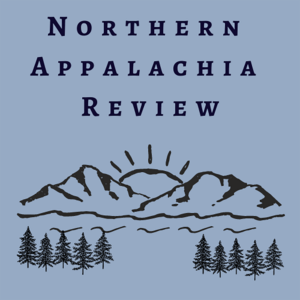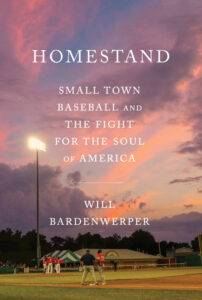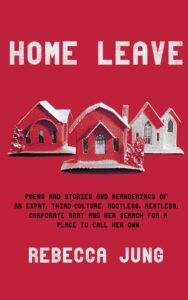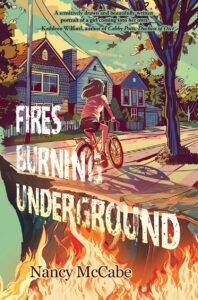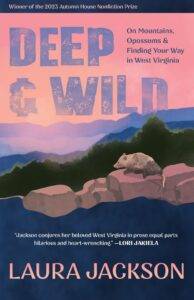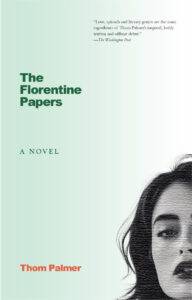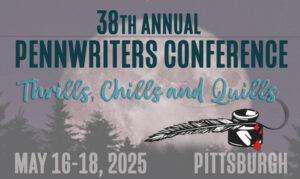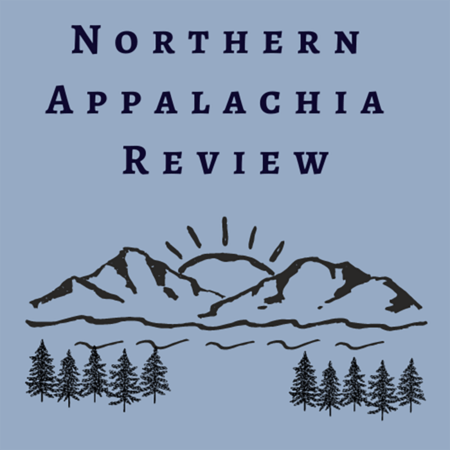“The Stairs on Billy Buck Hill is a Pittsburgh-based medical literary novel detailing a dedicated anesthesiologist’s descent into opioid addiction in Pittsburgh’s South Side neighborhood…”
From the Publisher: “A talented, devoted anesthesiologist, with a coveted academic position. A lovely, accomplished financial analyst with a glamorous social life, a high-rise apartment, and a dirty little secret. A chance encounter, a night of passion, a confessed preference for opioids… In this sordid tale of infatuation, temptation, and intoxication, Dr. Kurt McCain rises to a pinnacle of popularity and self-regard that he could not previously have imagined, only to realize that his pursuit of drug-induced euphoria has cost him nearly everything that he holds dear. His position, his profession, and his relationships with those he loves are destroyed, and the young physician finds himself at the lowest point of his life, disconsolate and alone. He must somehow summon all of his energies to overcome a dependence on opioids, while making a desperate attempt at the restoration of his practice, and for redemption in the eyes of those who care for him.
The nation is riven by a devastating epidemic that continues even as the COVID epidemic fades – opioids are killing Americans in unprecedented numbers. While physicians are often implicated among the many causes of this scourge, little attention is paid to the potential for doctors and nurses to become addicts themselves. Anesthesiologists and nurse anesthetists, who administer opioids with great regularity, are among the most susceptible providers. The Stairs On Billy Buck Hill relates one physician’s travails as he progresses from the carefully controlled, recreational use of opioid pills, to the brazen theft of fentanyl from his patients in the operating room, a treacherous descent that leads to the destruction of his career, his social standing, and very nearly himself…”More Info About the Author: “Steven L. Orebaugh is an anesthesiologist at an academic medical center whose position requires that he handle or prescribe opioid medications every working day. He has witnessed a number of ruined careers related to addiction among his peers, and has worked with trainees whose lives have been irrevocably altered by indulgence in the controlled substances that anesthesiologists administer to their patients. The Stairs On Billy Buck Hill illustrates the strong allure of these drugs, and how, once ingested, they create within the user a voracious appetite for greater indulgence, followed inevitably by ruinous consequences.
Most of his publications are related to his profession, with some 75 works in the medical literature, including peer-reviewed articles, textbook chapters, and review articles. In addition, he is the author of two medical textbooks, and has served as an editor or section editor for several more. In 2006, the Johns Hopkins University Press published his non-fiction book Understanding Anesthesia. This patient education manual, which explains the subtleties of operative anesthesia and pain management, empowers patients to ask appropriate questions about their perioperative care. Five years ago, his first fiction work, A Night in the Life, which describes the plight of a disenchanted emergency physician in a decaying urban hospital, was published by Pocol Press.
Dr. Orebaugh practices anesthesiology at the University of Pittsburgh Medical Center and has a special interest in regional anesthesia, an important means of reducing opioid use for pain control. He is especially enthused to teach these methods to doctors in training.”Author Website
How did your career as a physician shape your writing?
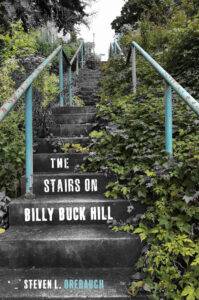 I experienced many different places while growing up, during my training, and in my early career, courtesy of the department of defense. I was an Air Force brat, born on a base in Fukaoka, Japan. I lived in a number of different towns and bases until I was 12, when we settled down in central PA, my father’s last duty station. I was fortunate to live for four years in Spain. This was a unique and wonderful time in my life, so much so that I wrote a memoir, which I hope to have published in the future.
I experienced many different places while growing up, during my training, and in my early career, courtesy of the department of defense. I was an Air Force brat, born on a base in Fukaoka, Japan. I lived in a number of different towns and bases until I was 12, when we settled down in central PA, my father’s last duty station. I was fortunate to live for four years in Spain. This was a unique and wonderful time in my life, so much so that I wrote a memoir, which I hope to have published in the future.
Originally, I chose emergency medicine as a specialty, and I also had a strong interest in critical care medicine, which led me back to anesthesiology. After that first residency, followed by a year of critical care fellowship, I then joined the Navy to fulfill my scholarship requirements, spending three years at the Naval Hospital, San Diego as an emergency physician. Soon after I reported to officer training school in Newport, Rhode Island, a war developed in Kuwait. Within a couple of months, I was sent overseas with a small medical unit in support of the First Marine Division. We built and staffed a field hospital, a unique and challenging experience in the middle of the desert. We were quite busy when the ground war broke out, but fortunately, the action came to a rapid, and successful conclusion. I also wrote an account of my experiences with that unit, and the fine people that I served with. I will submit that for potential publication within the next few years.
After I had finished my residency in anesthesiology here in Pittsburgh, I had no success finding a position in critical care, as the economic changes in medicine in the mid-90s led to a paucity of openings in local groups, and I was intent on staying in the city. So, I found a position that was half-time emergency medicine, half-time anesthesiology, which I was in for the next eight years. This led to some unusual circumstances-sometimes, I would admit a patient through the ED in the morning, then put on my OR hat and go to provide their anesthetic later that evening, when I was on-call for the anesthesia service! On a few occasions, patients with follow-up problems from surgery presented to the ED to find me, their anesthesiologist, now seeing them as an emergency physician.
I was always interested in writing, and during the early years of my career, I entertained thoughts of writing books specific to my areas of professional interest. Because I straddled the interface between two acute-care specialties, I sent a proposal for an airway atlas to Lippincott, Williams and Wilkins. Initially, the editor was open to the idea, but he soon left the company, which was disappointing. I pretty much forgot about it, but three years later, during the Iraq conflict, I was called up for active duty by the Navy reserve, and sent to Norfolk, Virginia, to help care for troops returning from the war. Surprisingly, I received a letter from the new editor, who had found the proposal and wanted to pursue it. This was an exciting opportunity for me. During the next few weeks, during which I had the unique opportunity to staff the medical department on an aircraft carrier during its maneuvers off the Atlantic coast, I began writing furiously to meet the timeline for the project. This resulted in the first “Airway Atlas: Tools, Tips and Techniques,” a practical, well-illustrated airway book for trainees and acute care providers. Eventually, the publisher requested a second edition, for which I served as editor, recruiting many physicians at the University of Pittsburgh to assist with the writing. At the same time, I was engaged in writing an educational book for patients undergoing surgery-my career was focused on ambulatory anesthesia, primarily providing nerve blocks for orthopedic patients, and teaching our residents about this. I found that many patients were ill-informed about regional anesthesia (nerve blocks) and were intimidated by the concept. To address this, I wrote a book that I entitled “Understanding Anesthesia,” intended as an instructive treatise for patients. This was published in 2006 by the Johns Hopkins University Press.
I was also pursuing my creative side at that time. In 2012 I decided to write a novel about emergency medicine, describing the stresses of an emergency physician, staffing a small, busy urban emergency department, similar to the one I had worked in until I shifted to practicing entirely in anesthesiology. I sought to create a realistic depiction of one night in a frenetic practice, and entitled it “A Night in the Life.” This was published by the Pocol Press, a small press in Virginia. More recently, in the midst of the burgeoning opioid crisis, in recognition of the toll it had taken on colleagues of mine in health care, I decided to write another novel, this one focused on an anesthesiologist who falls prey to opioids, eventually losing his practice, his relationships, and his profession. The Stairs on Billy Buck Hill was published earlier this year.
How do you carve out time to write? When and where do you find your greatest inspiration?
I stay up later than I should a lot of nights. My best time for writing is after the day’s activities are over, when the quiet of the evening allows me to concentrate. I am most inspired by high-quality writing. I especially appreciate classic literature, but I enjoy contemporary writing as well. A year or so ago, I read “All the Light We Cannot See.” Truly memorable.
What motivated you to write The Stairs on Billy Buck Hill?
As all of us, the nation is in the throes of a devastating epidemic—opioids are killing Americans in unprecedented numbers. While physicians have been implicated as one of the many causes of this scourge, little attention has been paid to the potential for doctors and nurses to become addicts themselves. Anesthesiologists and nurse anesthetists, who administer opioids with great regularity, are among the most susceptible providers- we handle opioids, and administer them, every working day. Unfortunately, I have been witness to several ruined careers related to addiction among my peers, and have worked with trainees whose lives have been irrevocably altered by opioid drugs. I was mystified by how compelling the allure of these drugs is, and how, once ingested, they create a voracious appetite for greater indulgence, followed almost inevitably by ruinous consequences. My hope is that this novel will be seen as a cautionary tale, one that can influence many health care providers and trainees.
What is up next for you? Are you currently working on any other book projects?
I’m currently editing a memoir of my years in Spain, as I noted above. Also, I am working on a book that is an account of the time I spent with the Marines as a Navy Medical Officer during Operation Desert Storm. In addition, I am fascinated by Civil War Medicine—I’m writing a novel about a Confederate surgeon coping with very demanding circumstances after a great battle. All of this work progresses at a snail’s pace, unfortunately. My first novel was published over six years ago and it took me almost five years to get the next one to the publication stage. I hope to be able to offer a new book every two to three years, especially as I come to have more time for writing in the future.




